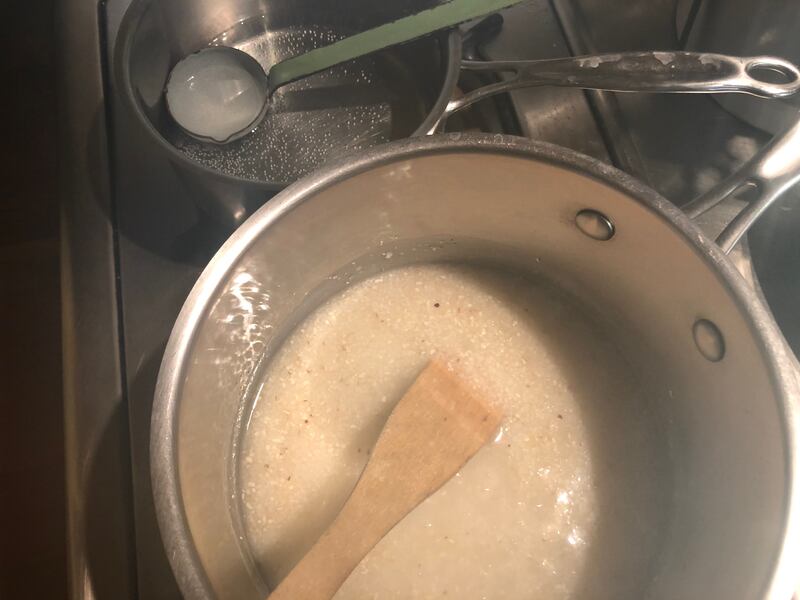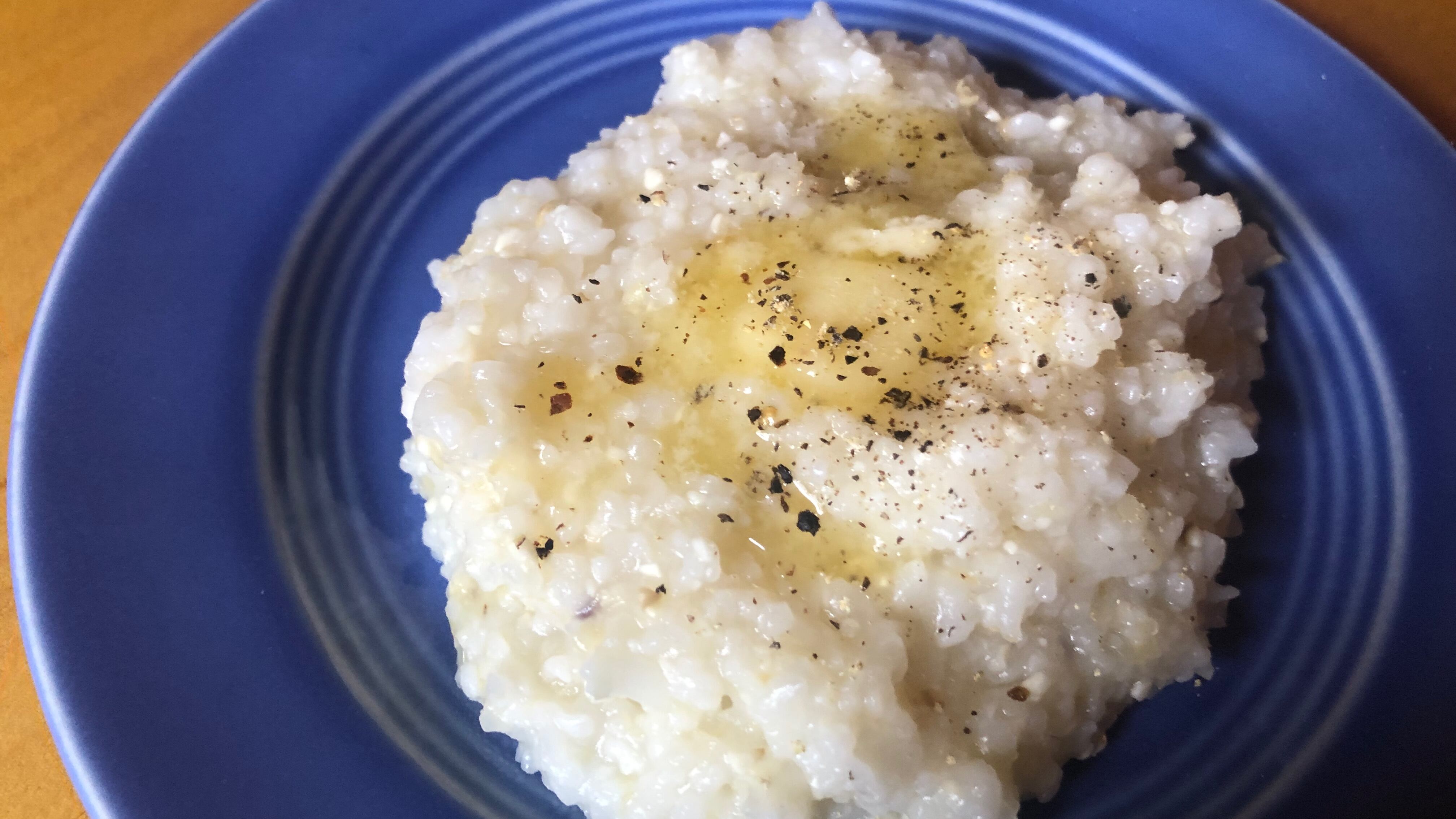Jim Dixon wrote about food for WW for more than 20 years, but these days most of his time is spent at his olive oil-focused specialty food business Wellspent Market. Jim’s always loved to eat, and he encourages his customers to cook by sending them recipes every week through his newsletter. We’re happy to have him back creating some special dishes just for WW readers.
Boil ground corn and you get, depending on where you’re from, polenta, grits, gruel, mămăligă, or one other of the dozens of things different cultures call cornmeal mush.
Culinary hair-splitters insist that Italian polenta is only made from hard, eight-row dent corn called otto file, while Southern grits must start with the softer, white-kerneled dent corn. But ignore them. Flint or dent, yellow or white (or even blue or red), everything except the sweet corn we chew off the cob can be dried, ground and cooked into the mush known by a thousand names.
For the best flavor, the cornmeal should be whole grain, which means the grinding process hasn’t removed the kernel’s germ. The tiny heart of the grain contains oils, and a food processing breakthrough more than a century ago led to “improved” milling that stripped it away. It gave the cornmeal a nearly indefinite shelf life but robbed it of most of its flavor.
Polenta or grits, and I use these most common terms interchangeably, made with freshly ground (or stored in the freezer to prevent rancidity) whole-grain corn tastes great and doesn’t need much more than a pat of butter and some black pepper. The degerminated cornmeal makes a mush that might look the same but needs to be smothered in sauce or gravy. Fortunately, whole-grain cornmeal isn’t too hard to find but may require a trip to the farmers market or an online order.
(Shameless self promotion alert: Portland’s best chefs swear that the cornmeal from Ayers Creek Farm in Gaston makes the best polenta, but Anthony and Carol Boutard sold it last year. Wellspent Market bought most of the Ayers Creek dried corn, Anthony gave us his portable mill, and we grind some cornmeal every few weeks.)
Once you get your hands on the good cornmeal, you need to cook it into polenta. Almost every recipe tells you to get a pot of water boiling, add the cornmeal in a steady stream, and stir like hell to try to get rid of the lumps. Don’t do it. Just mix the cornmeal with cold water, bring it gently to a boil, and stir occasionally until done. While that sounds easy, and it is, there are a few things that make the journey from cornmeal to grits easier.
Polenta made from whole-grain cornmeal needs at least 45 minutes of cooking to bring out the flavor of the corn, and an hour is even better. Nobody wants to stir continuously that long, so the corn will stick to the bottom of the pan. Stir every 10 minutes or so with a wooden spoon, or even better, a wooden implement with a flat, straight edge to scrape the bottom. Keep a pan of hot water on the stove and add a quarter-cup or so while you stir, and scrape the bottom of the pan until it feels smooth every time you stir.
When the grits are done, eat them right away with butter, cheese, or anything else. Or pour the polenta onto a sheet pan (the Italians dump the pot onto a wooden board), let it cool and cut into pieces that can be pan fried or grilled.

Polenta, Grits, or Cornmeal Mush
Makes about 3 cups.
1 cup whole-grain cornmeal (either coarse or fine-grind)
3 cups water
1 teaspoon kosher-style sea salt
Stir the cornmeal and salt into the cold water. Bring gently to a boil. Once bubbles appear, reduce the heat to a simmer. Set another pot of water on the stove and bring to a boil, then remove from the heat.
Stir every 10 minutes or so with a wooden spoon, scraping the bottom of the pot to loosen any cornmeal that is sticking. Continue to cook, stirring frequently. Add a little hot water from the other pan occasionally as the polenta thickens. Cook for 45-60 minutes.
